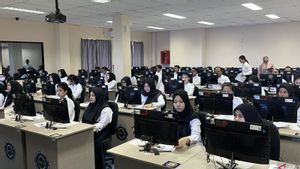JAKARTA - The Malaysian Space Agency (MYSA) detected debris from China's Long March 5B rocket that fell from space in the Sulu Sea sector on Sunday morning, at 00:55 a.m. local time.
The agency, which is under the Ministry of Science, Technology and Innovation (MOSTI), in a statement accessed in Kuala Lumpur quoted from Antara, Sunday, July 31, said that the debris of the burning rocket had also crossed Malaysian airspace and could be detected in several areas. areas, including around the State of Sarawak.
The burning debris was detected falling in the Sulu Sea between latitude 9.1 degrees North and longitude 119 degrees East.
The day before, MYSA estimated the rocket debris would enter Earth's airspace on July 30, at approximately 4:24 p.m. local time to August 1, 2022, at around 00:24 Malaysian time, while the object was still orbiting and approaching the "re-entry" zone.
The Long March 5B rocket launched from Wenchang Spacecraft Launch Site, Wenchang, China, on July 24, 2022 to deliver the 23.000 kilogram (kg) Wentian module to the Tiangong Space Station.
Rocket debris is expected to enter Earth's atmosphere within days of sending the module.
However, MYSA said the location of the "re-entry" of the rocket debris could not be accurately estimated.
Each launch of a rocket will usually leave debris, and its size is very dependent on the size of the rocket being launched.
The Long March 5B rocket is rather large, according to MYSA, so the debris that entered Earth was also large.
VOIR éGALEMENT:
However, most of the rocket debris will burn up in the atmosphere and split into smaller pieces. Only a small part that does not burn completely will fall to Earth.
The English, Chinese, Japanese, Arabic, and French versions are automatically generated by the AI. So there may still be inaccuracies in translating, please always see Indonesian as our main language. (system supported by DigitalSiber.id)















